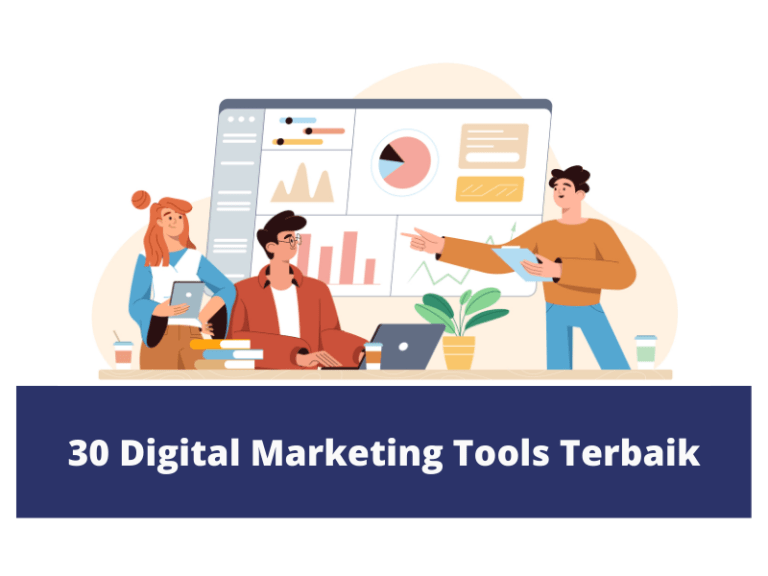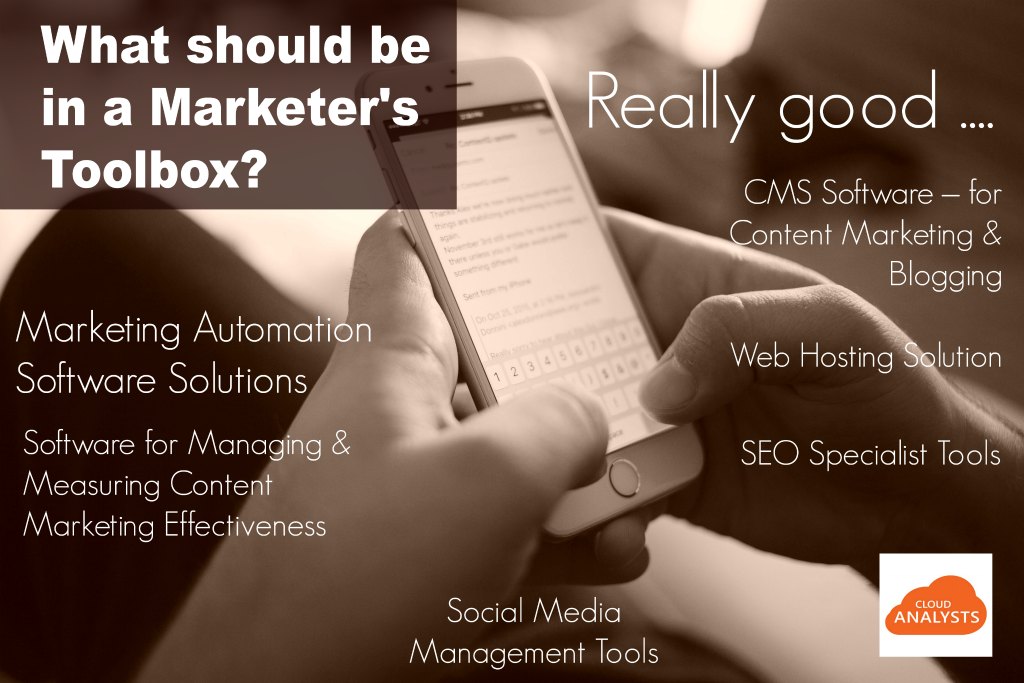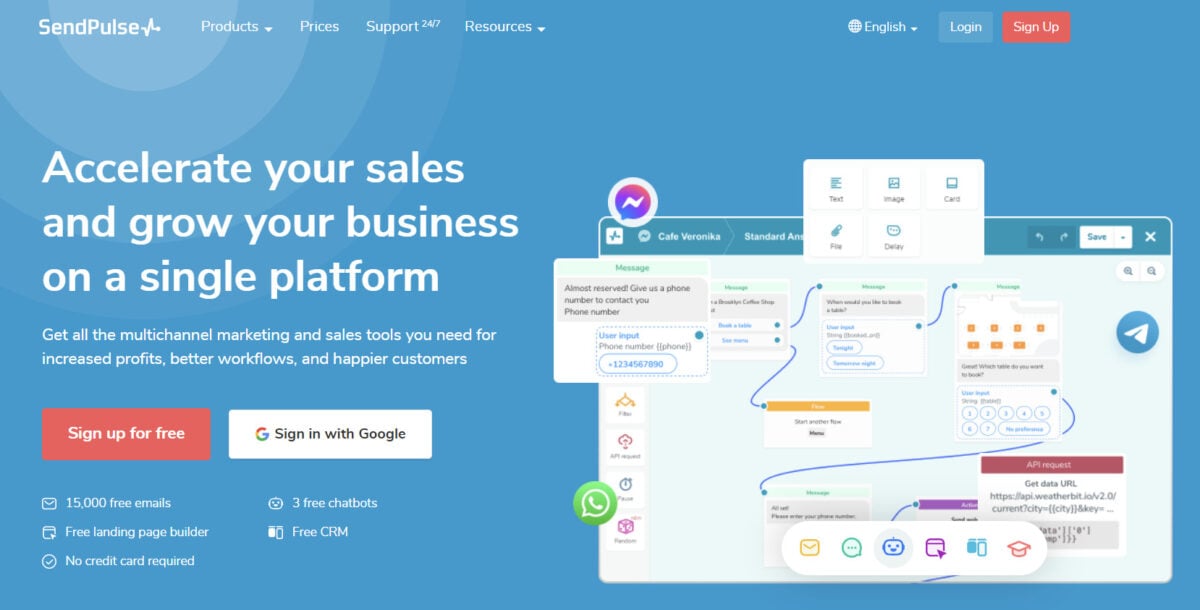Cross-platform marketing tools are revolutionizing how businesses reach their target audiences. These powerful instruments allow for streamlined management of marketing campaigns across various platforms, from social media to email marketing and beyond. By unifying these efforts, companies can achieve greater efficiency, consistency, and ultimately, a higher return on investment (ROI).
This guide delves into the core functionalities of cross-platform marketing tools, exploring their diverse categories and providing practical examples. We’ll examine the benefits of a unified marketing approach, address common challenges, and offer strategies for selecting and effectively utilizing these tools. Case studies of successful campaigns will illustrate the real-world impact, and we’ll also look ahead to future trends and technological advancements shaping this dynamic field.
Defining Cross-Platform Marketing Tools

Cross-platform marketing tools are software solutions designed to streamline and optimize marketing campaigns across multiple digital channels. They centralize various marketing functions, enabling marketers to manage and analyze their efforts from a single dashboard, improving efficiency and providing a holistic view of campaign performance. This approach allows for a more consistent brand message and targeted audience engagement across diverse platforms.
Cross-platform marketing tools offer core functionalities that extend beyond the capabilities of single-channel solutions. These functionalities typically include campaign management, analytics and reporting, social media integration, email marketing, advertising management, and customer relationship management (CRM) features. The tools often integrate with various advertising platforms and social media networks, allowing marketers to execute and track campaigns across diverse channels like Facebook, Instagram, Google Ads, Twitter, and more. Data aggregation and analysis are key features, enabling marketers to understand overall campaign performance and identify areas for improvement.
Categories of Cross-Platform Marketing Tools
Cross-platform marketing tools can be broadly categorized based on their primary functionalities. Some tools focus heavily on campaign management and automation, while others prioritize analytics and reporting. Yet others specialize in specific marketing channels, like social media or email, offering comprehensive features within that niche. There’s also a growing category of all-in-one marketing suites designed to provide a complete solution encompassing all major marketing functions.
Examples of Cross-Platform Marketing Tools
Several popular cross-platform marketing tools exemplify the diverse functionalities available. These tools can be grouped by their primary focus.
Campaign Management & Automation Tools:
* HubSpot: A comprehensive marketing automation platform offering features like email marketing, CRM, social media management, and landing page creation. It facilitates workflow automation and provides detailed analytics.
* Marketo: Another strong contender in marketing automation, Marketo excels in lead nurturing and complex campaign orchestration, particularly beneficial for larger enterprises.
Analytics & Reporting Tools:
* Google Analytics: While not strictly a cross-platform *marketing* tool, Google Analytics is crucial for measuring website traffic and campaign performance across various channels. Its integration with other Google marketing tools makes it invaluable.
* Adobe Analytics: A robust analytics platform offering in-depth data analysis and visualization capabilities, allowing marketers to gain valuable insights from their cross-platform campaigns.
Social Media Management Tools:
* Hootsuite: A popular social media management platform that allows scheduling posts, monitoring mentions, and analyzing social media performance across multiple platforms.
* Buffer: Another strong option for social media management, Buffer simplifies content scheduling and provides analytics to track engagement.
Comparison of Cross-Platform Marketing Tools
| Tool | Strengths | Weaknesses | Best For |
|---|---|---|---|
| HubSpot | Comprehensive features, ease of use, strong CRM integration | Can be expensive, some features might be overwhelming for smaller businesses | Small to medium-sized businesses, those needing all-in-one solution |
| Marketo | Advanced automation capabilities, excellent for complex campaigns, robust analytics | Steeper learning curve, more expensive, best suited for larger enterprises | Large enterprises with complex marketing needs |
| Google Analytics | Free, powerful analytics, integrates well with other Google services | Requires technical knowledge to fully utilize, limited marketing automation features | Businesses of all sizes needing website traffic and campaign performance data |
| Hootsuite | User-friendly interface, excellent for social media management, strong collaboration features | Some advanced analytics features may require a higher-tier plan | Businesses with a strong social media presence |
Benefits of Utilizing Cross-Platform Marketing Tools
Cross-platform marketing tools offer a significant advantage to businesses aiming for comprehensive reach and efficient campaign management. By unifying marketing efforts across various platforms, companies can streamline operations, enhance audience engagement, and ultimately, achieve a better return on investment. A unified approach ensures brand consistency and allows for a more holistic understanding of customer behavior across different touchpoints.
Utilizing cross-platform marketing tools significantly improves the efficiency of marketing campaigns. These tools automate many repetitive tasks, such as scheduling posts, analyzing data, and managing ad spend across multiple channels. This automation frees up valuable time and resources, allowing marketing teams to focus on strategic initiatives and creative content development. The centralized nature of these tools also allows for better tracking and measurement of campaign performance, leading to more data-driven decision-making.
Improved Efficiency in Marketing Campaigns
The integration of various marketing channels within a single platform streamlines workflow. For example, a social media management tool can schedule posts across Facebook, Instagram, Twitter, and LinkedIn simultaneously, saving considerable time compared to managing each platform individually. Furthermore, many tools provide analytics dashboards that consolidate data from all connected platforms, providing a comprehensive overview of campaign performance without requiring manual data aggregation from multiple sources. This consolidated view facilitates quicker identification of successful strategies and areas needing improvement. This leads to faster campaign optimization and better resource allocation.
Reaching Wider Audiences Through Cross-Platform Strategies
Businesses can leverage cross-platform tools to reach a wider and more diverse audience. By using these tools to coordinate messaging and campaigns across multiple channels, companies can increase brand visibility and ensure consistent brand messaging regardless of where potential customers are interacting with the brand. For instance, a company launching a new product might utilize a cross-platform tool to coordinate a social media campaign with email marketing and paid advertising. This multi-faceted approach increases the likelihood of reaching the target audience through their preferred channels, maximizing exposure and engagement. Imagine a scenario where a company uses a cross-platform tool to launch a coordinated campaign promoting a sale across its website, email list, and social media platforms – the result is a much more impactful campaign than using each channel in isolation.
Enhanced Return on Investment (ROI)
Cross-platform marketing tools directly contribute to a better ROI through increased efficiency and improved targeting. The automation features reduce manual labor, leading to cost savings. Moreover, the ability to track and analyze data across all platforms provides valuable insights into customer behavior and campaign effectiveness, allowing for more targeted spending and improved conversion rates. For example, if a company discovers through its cross-platform analytics that a particular ad creative performs exceptionally well on Instagram, it can allocate more budget to that specific creative on that platform, optimizing ad spend for maximum impact. This data-driven approach minimizes wasted resources and maximizes the return on marketing investment.
Challenges and Considerations in Cross-Platform Marketing
Successfully executing a cross-platform marketing strategy requires careful planning and execution. The inherent complexities of managing multiple platforms, each with its own unique audience and characteristics, present significant hurdles that need to be proactively addressed. Failing to do so can lead to wasted resources, inconsistent messaging, and ultimately, a less effective marketing campaign.
Managing multiple platforms simultaneously introduces several key challenges. The need for consistent brand messaging across diverse platforms, tailoring content to suit individual platform audiences, and the overall complexity of campaign management are just some of the considerations that require careful attention.
Managing Multiple Platforms Simultaneously
The sheer volume of tasks involved in managing a cross-platform marketing campaign can be overwhelming. This includes scheduling posts, creating content, monitoring analytics, engaging with audiences, and responding to comments and messages across various platforms. Efficient project management tools, detailed scheduling calendars, and potentially the delegation of specific tasks to team members are crucial for success. For example, a team might assign one member to manage social media content on Instagram and another to focus on email marketing campaigns. A project management tool like Asana or Trello can help centralize tasks and track progress, ensuring no task falls through the cracks.
Maintaining Consistent Branding Across Platforms
Consistency in branding is paramount across all platforms. A unified brand identity fosters recognition and trust among consumers. This includes maintaining a consistent brand voice, logo, color scheme, and overall aesthetic across platforms. Inconsistencies can confuse audiences and dilute the impact of your marketing efforts. For instance, using a playful tone on Instagram but a formal tone on LinkedIn might alienate certain segments of your audience. Developing a comprehensive brand style guide, readily accessible to all team members involved in content creation, helps ensure consistency.
Tailoring Content for Various Platforms
Each platform has its own unique audience and content preferences. What works well on Instagram might not resonate on LinkedIn or Twitter. Tailoring content to suit each platform is essential for maximizing engagement. For example, short, visually appealing videos are ideal for platforms like TikTok and Instagram Reels, while in-depth articles or white papers might be more suitable for LinkedIn. Understanding the demographics, interests, and preferred content formats of each platform’s user base is critical for effective content creation. A/B testing different content formats on each platform can also help determine what resonates best with the target audience.
Strategies for Overcoming Cross-Platform Marketing Challenges
Effective strategies for overcoming these challenges include establishing clear goals and key performance indicators (KPIs) for each platform, investing in robust marketing automation tools, and regularly analyzing performance data to optimize campaigns. Centralizing content creation and scheduling through a single platform can streamline workflow and improve efficiency. Moreover, thorough competitor analysis and benchmarking against industry best practices can provide valuable insights for continuous improvement. Regular team meetings dedicated to reviewing campaign performance and adjusting strategies based on data analysis are also crucial.
Selecting the Right Cross-Platform Marketing Tools

Choosing the right cross-platform marketing tools is crucial for maximizing your marketing ROI. The sheer number of available options can be overwhelming, but a strategic approach, based on a clear understanding of your business needs and goals, can streamline the selection process. This section Artikels a step-by-step guide to help you navigate this crucial decision.
A Step-by-Step Guide for Choosing Marketing Tools
Selecting the right tools requires a methodical approach. First, define your marketing objectives and target audience. Then, evaluate available tools based on their features, integrations, and pricing. Finally, implement a phased rollout, starting with core functionalities and gradually expanding as needed.
- Define Marketing Objectives and Target Audience: Clearly articulate your marketing goals. Are you aiming for increased brand awareness, lead generation, or sales conversions? Understanding your target audience’s demographics, online behavior, and preferred platforms is equally vital. This informs your choice of tools and channels.
- Evaluate Tool Features and Integrations: Consider the specific features offered by different tools. Do they support all your necessary platforms (e.g., Facebook, Instagram, Twitter, email)? Assess the level of automation, analytics capabilities, and reporting features. Seamless integration with your existing CRM and other marketing systems is crucial for efficiency.
- Analyze Pricing Models and Budget Allocation: Different tools offer various pricing models (discussed in detail below). Align your tool selection with your budget, ensuring you allocate resources effectively across different platforms and functionalities.
- Implement a Phased Rollout: Don’t try to implement every tool at once. Start with a core set of tools that address your most pressing needs. Gradually introduce additional tools as your team gains experience and you identify further areas for improvement.
Comparison of Cross-Platform Marketing Tool Pricing Models
Understanding the different pricing models is critical for budgeting. Common models include:
| Pricing Model | Description | Example |
|---|---|---|
| Freemium | Offers a basic version for free with paid upgrades for advanced features. | Many social media management tools offer free plans with limited features, while paid plans unlock features like scheduling and analytics dashboards. |
| Subscription-based | A recurring monthly or annual fee for access to the tool’s features. Pricing may vary based on the number of users or features included. | HubSpot offers various subscription tiers based on the number of contacts and features accessed. |
| Pay-per-use | Users pay only for the features or services they utilize. | Some email marketing platforms charge based on the number of emails sent. |
| Tiered Pricing | Offers different pricing plans with varying levels of features and functionality. | Many CRM platforms offer different tiers based on user numbers and features. |
Best Practices for Seamless Integration of Marketing Tools, Cross-platform marketing tools
Effective integration is paramount for avoiding data silos and maximizing efficiency. Prioritize tools with robust API integrations to facilitate data exchange between different systems. Consider using a marketing automation platform to orchestrate workflows across various tools.
- Prioritize API Integrations: Tools with open APIs allow for seamless data transfer and automation between different systems. This minimizes manual data entry and reduces the risk of errors.
- Utilize Marketing Automation Platforms: These platforms centralize marketing workflows, automating tasks and improving efficiency. They can integrate with various tools to create a unified marketing ecosystem.
- Establish Clear Data Governance Policies: Define how data will be collected, stored, and used across different tools. This ensures data consistency and compliance with relevant regulations.
Checklist for Selecting Cross-Platform Marketing Tools
Before making a decision, consider these key factors:
- Alignment with Marketing Objectives: Does the tool directly support your marketing goals?
- Target Audience Compatibility: Does the tool reach your target audience on their preferred platforms?
- Ease of Use and User Interface: Is the tool intuitive and easy for your team to use?
- Integration Capabilities: Does it integrate seamlessly with your existing systems?
- Scalability and Flexibility: Can the tool adapt to your growing business needs?
- Reporting and Analytics: Does it provide comprehensive data and insights?
- Customer Support and Documentation: Is reliable support readily available?
- Pricing and Value for Money: Does the cost align with the benefits offered?
- Security and Data Privacy: Does the tool adhere to industry best practices for data security?
Case Studies of Successful Cross-Platform Marketing Campaigns

Cross-platform marketing campaigns, when executed effectively, can significantly boost brand awareness and drive sales. Successful campaigns leverage the strengths of different platforms to create a cohesive and engaging brand experience for consumers. Analyzing these campaigns provides valuable insights into best practices and effective strategies.
Spotify Wrapped: A Data-Driven Cross-Platform Success
Spotify’s annual “Wrapped” campaign is a prime example of a highly successful cross-platform marketing initiative. This campaign utilizes data collected from users’ listening habits to generate personalized year-end summaries, showcasing their top artists, songs, genres, and listening time. These personalized summaries are then shared across multiple platforms – primarily the Spotify app itself, but also extensively promoted on social media platforms like Instagram, Twitter, and Facebook.
Visual Elements of the Spotify Wrapped Campaign
The visual elements are consistently clean and aesthetically pleasing. The color palette typically involves a gradient of calming, muted colors, often incorporating the Spotify green. The design focuses on clear, easily digestible data visualizations, such as circular graphs displaying top artists and genre breakdowns presented as sleek, horizontal bars. The overall aesthetic is modern, minimalist, and user-friendly, aligning with Spotify’s brand identity. Each user’s “Wrapped” summary features their personalized data prominently, creating a sense of individual recognition and rewarding their engagement with the platform. The campaign’s social media presence uses similar visuals, often featuring short, animated videos showcasing the data in a dynamic way.
The campaign leverages user-generated content by encouraging users to share their “Wrapped” summaries on their own social media accounts, thereby amplifying the campaign’s reach organically. This is further boosted by paid social media advertising featuring eye-catching visuals that are consistent with the design of the personalized summaries.
Strategies and Effectiveness of the Spotify Wrapped Campaign
Spotify’s success stems from several key strategies. Firstly, the campaign leverages personalized data to create highly engaging content. Users are inherently curious about their own listening habits, making the “Wrapped” summary inherently shareable. Secondly, the campaign utilizes a multi-platform approach, ensuring maximum reach and visibility. Finally, it cleverly encourages user-generated content, extending the campaign’s lifespan and amplifying its reach organically.
The impact of the campaign is substantial. While precise figures are not publicly released by Spotify, the widespread social media sharing and significant media coverage clearly indicate a substantial increase in brand awareness and positive sentiment. The campaign’s effectiveness is also demonstrated by the consistent year-over-year growth in Spotify’s user base.
Lessons Learned from Spotify Wrapped
The success of the Spotify Wrapped campaign offers several key takeaways for marketers:
- Leverage User Data: Personalized content resonates deeply with audiences and encourages sharing.
- Multi-Platform Strategy: Utilize various platforms to maximize reach and impact.
- Encourage User-Generated Content: Organic sharing amplifies the campaign’s reach and creates positive brand association.
- Maintain Brand Consistency: A consistent visual identity across all platforms strengthens brand recognition.
- Data-Driven Optimization: Analyze campaign data to refine strategies for future iterations.
Future Trends in Cross-Platform Marketing Tools

The landscape of cross-platform marketing is constantly evolving, driven by advancements in technology and the ever-changing behavior of consumers. The next few years will witness significant shifts in how brands manage and execute their cross-platform strategies, largely influenced by the integration of emerging technologies and the increasing sophistication of marketing automation. This evolution will lead to more personalized, efficient, and data-driven marketing campaigns.
The integration of artificial intelligence (AI) and machine learning (ML) will be a primary driver of these changes. These technologies are poised to revolutionize how marketers analyze data, personalize messaging, and optimize campaign performance across multiple platforms. This shift towards intelligent automation will allow marketers to focus on strategic decision-making rather than manual, repetitive tasks.
The Impact of Emerging Technologies
The convergence of several technologies is reshaping cross-platform marketing. For instance, the increasing prevalence of 5G networks will facilitate faster data transfer speeds, enabling the seamless delivery of richer media content across various platforms. This improvement in infrastructure will support the growth of interactive and immersive marketing experiences, such as augmented reality (AR) and virtual reality (VR) campaigns. Simultaneously, the expansion of the Internet of Things (IoT) creates opportunities for context-aware marketing, where messages are tailored based on the user’s location, device, and even their current activity. Consider, for example, a fitness app that automatically displays targeted ads for athletic wear based on a user’s workout session.
Evolution of Cross-Platform Marketing Tools in the Next Few Years
We can anticipate several key evolutions in cross-platform marketing tools over the next few years. One major trend will be the increased integration and automation of different marketing platforms. Tools will become more adept at consolidating data from various sources, offering a unified view of customer interactions across all channels. This will enable marketers to create more holistic and consistent brand experiences. Furthermore, expect to see a greater emphasis on real-time analytics and reporting. Tools will provide immediate feedback on campaign performance, allowing for faster adjustments and optimization. This real-time capability will be crucial in responding swiftly to changing market dynamics and consumer preferences. For instance, a social media campaign showing low engagement can be instantly adjusted based on real-time data analysis, leading to improved ROI.
The Role of AI and Machine Learning
AI and ML will fundamentally transform cross-platform marketing tools. These technologies will empower marketers to automate tasks such as audience segmentation, ad targeting, and content personalization. AI-powered tools will analyze vast datasets to identify patterns and predict consumer behavior, leading to more effective campaign strategies. Machine learning algorithms can optimize ad bidding in real-time, ensuring that marketing budgets are allocated efficiently across different platforms. Imagine a tool that automatically adjusts bidding strategies based on real-time user engagement, ensuring maximum impact with minimal wasted spend. Beyond optimization, AI can also power more sophisticated chatbots and virtual assistants, providing personalized customer service and support across various channels.
Potential New Features and Functionalities
Future cross-platform marketing tools may incorporate several innovative features. One likely addition is the enhanced ability to measure the impact of cross-platform campaigns more comprehensively. Tools will likely move beyond simple metrics like impressions and clicks, providing deeper insights into customer journey mapping and the overall return on investment. Another potential feature is improved cross-platform attribution modeling, enabling marketers to accurately assess the contribution of each channel to conversions. This will allow for more informed budget allocation and strategic planning. Furthermore, expect tools to offer more sophisticated capabilities for A/B testing and campaign optimization across different platforms. This would involve automating the testing process and providing clear recommendations for improvement based on real-time data analysis. Finally, expect greater emphasis on privacy-preserving techniques and data security, as regulations around data usage continue to evolve.
Ending Remarks

Mastering cross-platform marketing tools is no longer optional; it’s essential for businesses aiming to thrive in today’s competitive landscape. By understanding the benefits, challenges, and best practices Artikeld in this guide, businesses can leverage the power of unified marketing to expand their reach, enhance brand consistency, and achieve significant growth. The future of marketing lies in seamless integration and intelligent automation, and cross-platform tools are at the forefront of this evolution.
Effective cross-platform marketing tools are crucial for reaching diverse audiences. A key element in leveraging these tools successfully involves a well-defined Global expansion strategy , allowing you to tailor your messaging and campaigns to resonate with specific regional markets. Ultimately, a robust cross-platform approach, informed by a strong global strategy, maximizes your reach and impact.
Effective cross-platform marketing tools are crucial for reaching a wide audience. Maintaining focus during campaign development is key, and using a tool like the Aplikasi pengatur waktu fokus can significantly improve productivity. This allows for better time management, ultimately leading to more successful and well-executed cross-platform marketing strategies.